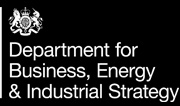
NAA Member News: Brabners – Playing with fire: unpacking proposed changes to Conditions of Carriage
With a potential change to the rules on the table regarding liability during force majeure events, Brabners’ Brett Cooper outlines how vehicle transporters can ensure ongoing compliance with Conditions of Carriage laws.
In the car transport sector, the rules that govern liability are often overlooked – until something goes wrong.
When they do, the small print in Conditions of Carriage suddenly becomes incredibly important to operators and customers alike.
For clarity, Conditions of Carriage are contractual terms set by haulage companies that outline responsibilities, liabilities, and limitations of both the carrier and customer regarding the transportation of goods. These conditions typically address aspects such as loading/unloading, delivery timelines, liability for loss or damage, insurance requirements, and payment terms.
Recently, one clause has been under growing scrutiny: fire as a force majeure event. Until recently, it has operated as a legal backstop in the Road Haulage Association’s (RHA) Conditions of Carriage for car transporters, shielding carriers from liability in the event of unforeseen circumstances.
However, an unprecedented and unfortunate spate of fires on vehicle transporters over the past six months has brought the topic to the forefront of sector discourse – and with the next annual regulatory revision cycle looming, a change to the rules may well be on the table.
This move would shift the risk landscape for transport operators across the UK, and ongoing conversations with our clients across the automotive supply chain indicate growing uncertainty about where liability lines may soon be re-drawn.
In preparation, it’s important that transport management teams get to grips with the possible changes – and consider how they might be affected.
The current landscape
Under the existing RHA 2024 Conditions, vehicle transporters are only allowed to accept vehicles under strict contractual terms.
One such rule is that carriers are liable for physical loss or damage during transit. However, that liability is waived in instances of ‘force majeure’ – which includes fire, extreme weather, terrorism, road accidents and other unforeseen events.
The logic is straightforward: certain events are simply beyond the operator’s control, and insuring against them would create unaffordable risk exposure. Operators are therefore encouraged to advise customers to seek their own comprehensive insurance coverage.
Shifting standards
In practice, though, this can lead to legal uncertainty – especially when an insurer declines to pay out and the transporter, pointing to the force majeure clause, declines liability too. For customers – particularly those moving high value vehicles – this can feel like being caught in a contractual no-man’s land.
Anecdotally, we’re seeing more and more insurers push back against force majeure claims, sparking wider conversations about fairness, responsibility and accountability. Interestingly, many transporters themselves have also raised concerns, with some feeling the current conditions put them at odds with clients and place undue strain on customer trust.
This forms part of a broader push within the logistics and transport sectors to modernise and better align with evolving industry standards across Europe. Removing or narrowing the fire exclusion could bring the RHA conditions more in line with customer-centric contracting practices seen in adjacent sectors.
It would also reflect a more nuanced approach that recognises the complexity of modern vehicle logistics – especially with the increasing use of electric vehicles, which can pose new risks for transporters, such as battery fires.
Adapting to changes
The Conditions of Carriage may seem like a technical detail, but they shape how risk is shared (or shifted) across the supply chain. As such, operators who get ahead of the changes, engage proactively and take a close look at their contracts and cover will be best placed to handle whatever revisions come next.
A key first step for transporters should be to identify where and how the RHA Conditions are incorporated into their existing service contracts. If changes are made to liability around fire or force majeure, these will directly affect operator responsibilities. Engaging with a legal advisors can help identify risks in existing agreements and, where necessary, revise terms to ensure continued protection.
It’s also critical to reassess insurance policies. If fire is no longer excluded from liability, operators must confirm whether their cover accounts for such risks – especially when subcontractors are involved. Gaps in coverage could expose businesses to claims for high-value losses, so early dialogue with insurers is essential. With this in mind, we’d also advise operators to have service contracts approved by insurers, and seek agreement that they will be covered for any liability that arises from that service contract.
Crucially, if new rules are introduced, then operators should also update customer-facing documents and processes. Customer transparency is a key driver of trust. If liability rules shift, clear communication around what is – and isn’t – covered in transit will reduce the likelihood of disputes and help maintain positive customer relationships.
Businesses should also keep close ties with the RHA and engage in any consultations. By contributing feedback and staying ahead of proposed revisions, operators can influence fair outcomes and prepare early. Legal support will be key in interpreting and implementing these changes with confidence.
For transporter businesses, changes to the Conditions of Carriage carry substantial commercial weight. As industry norms evolve, management teams need to be proactive and informed. By seeking early legal insight and engaging constructively with customers and trade bodies, businesses can not only stay compliant but build resilience in the face of shifting contractual terrain.
For tailored advice on reviewing your transport conditions or preparing for the year ahead, contact Brett.Cooper@brabners.co.uk





